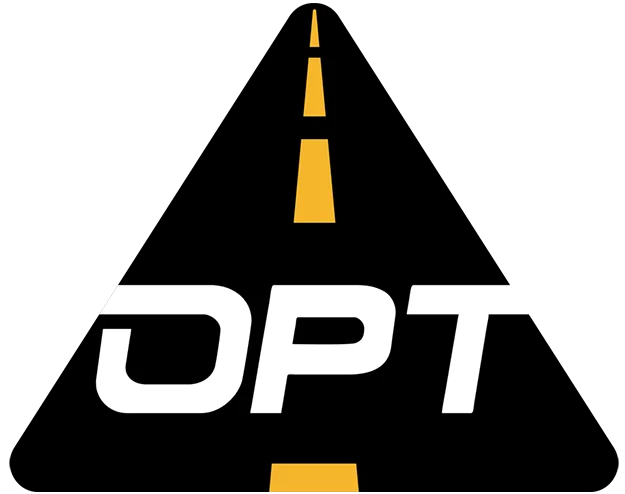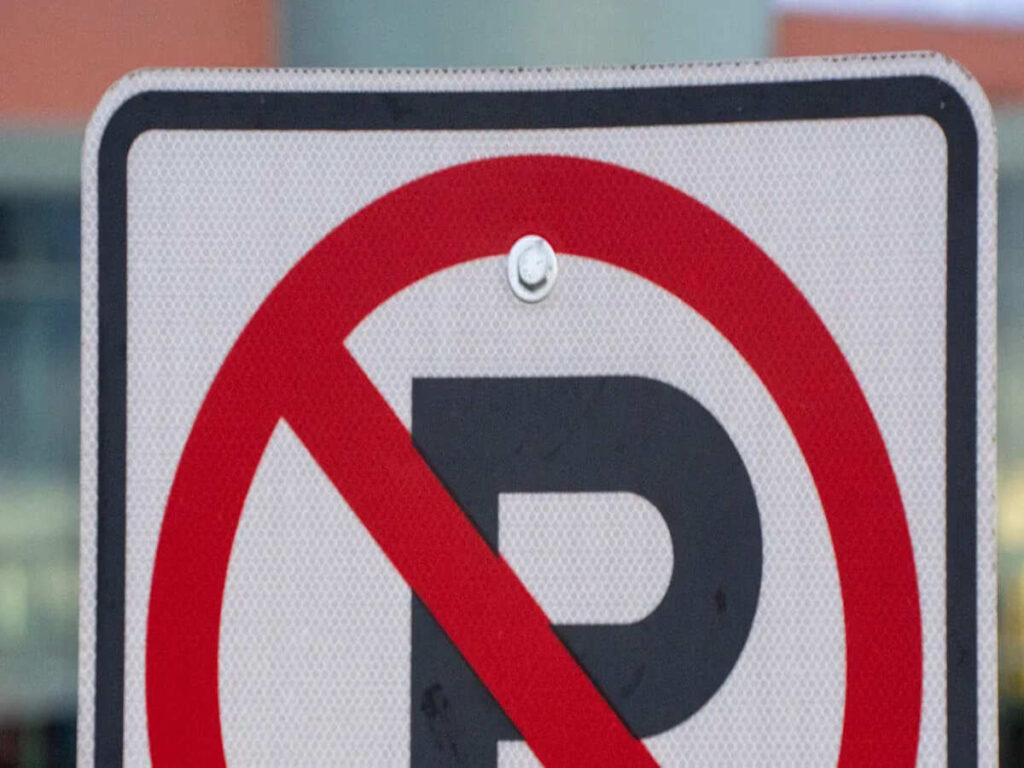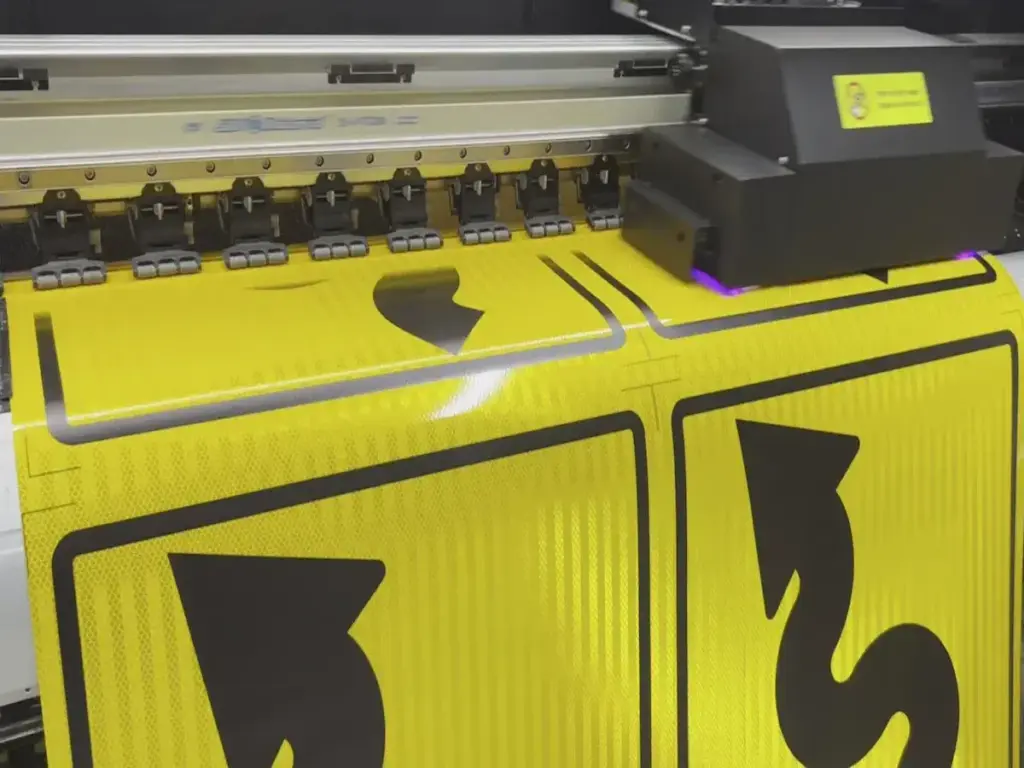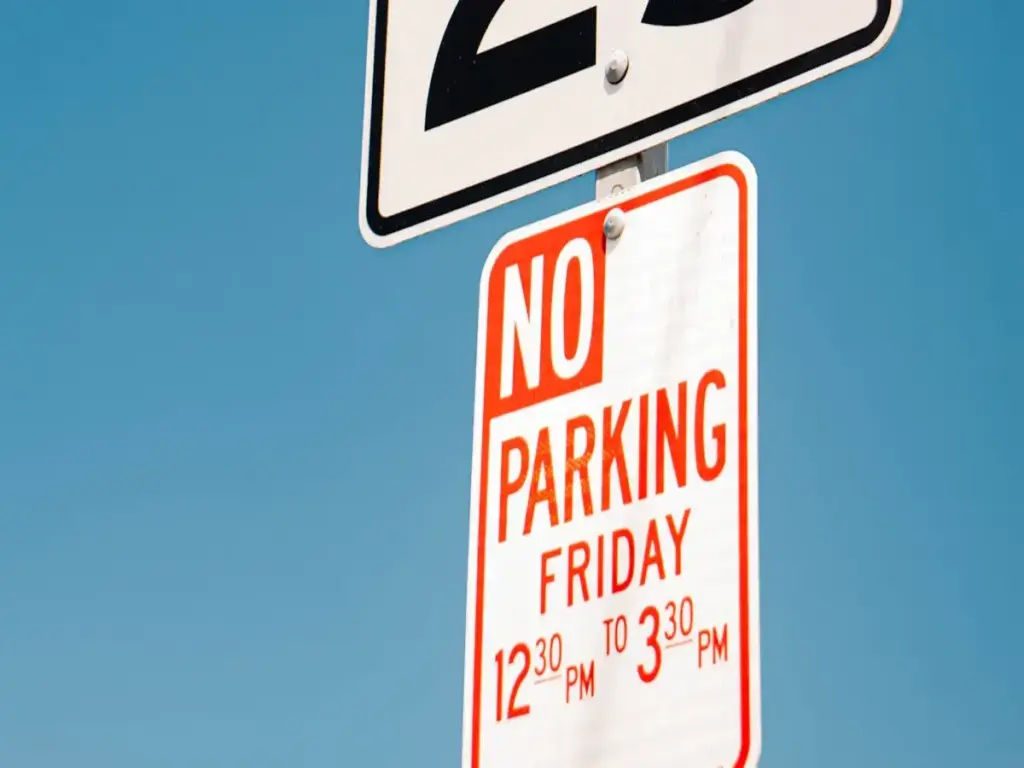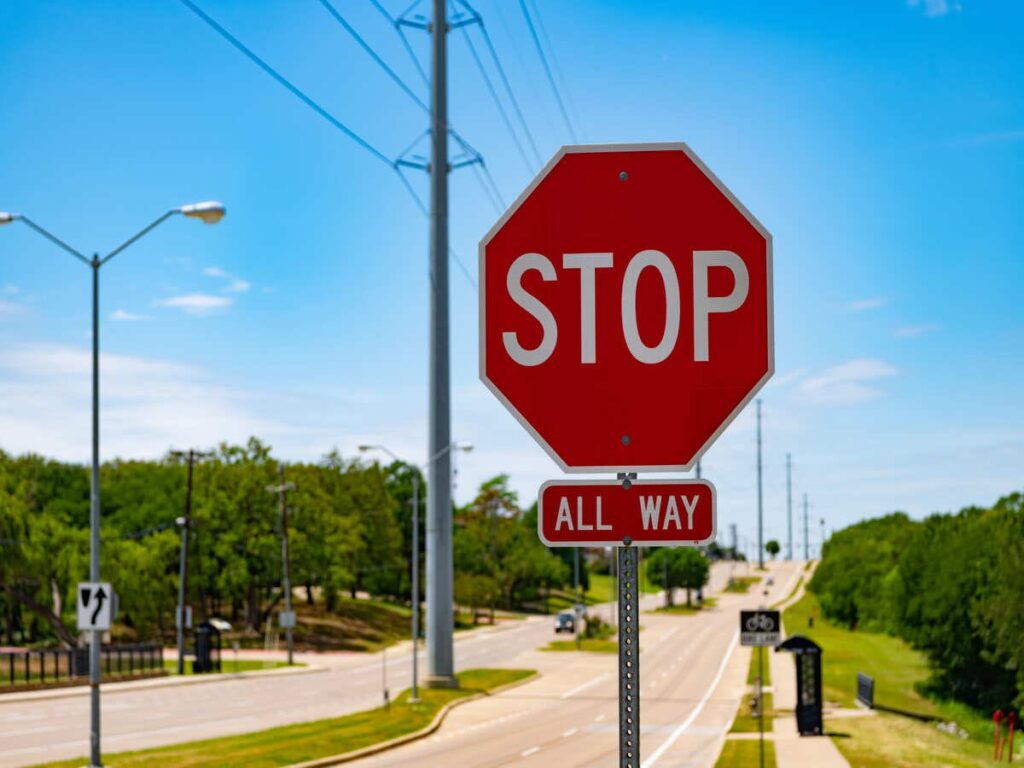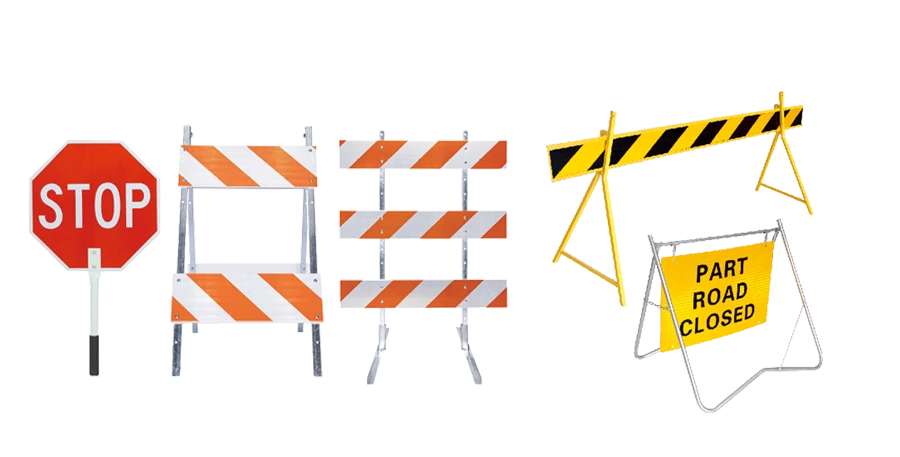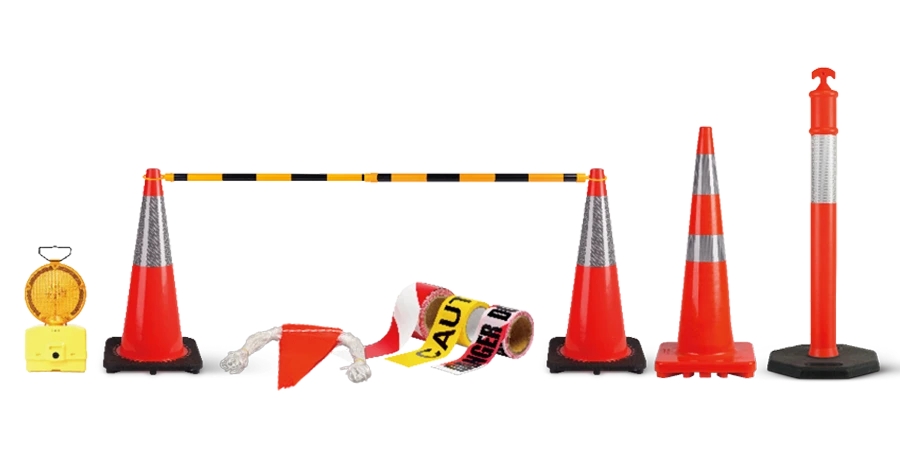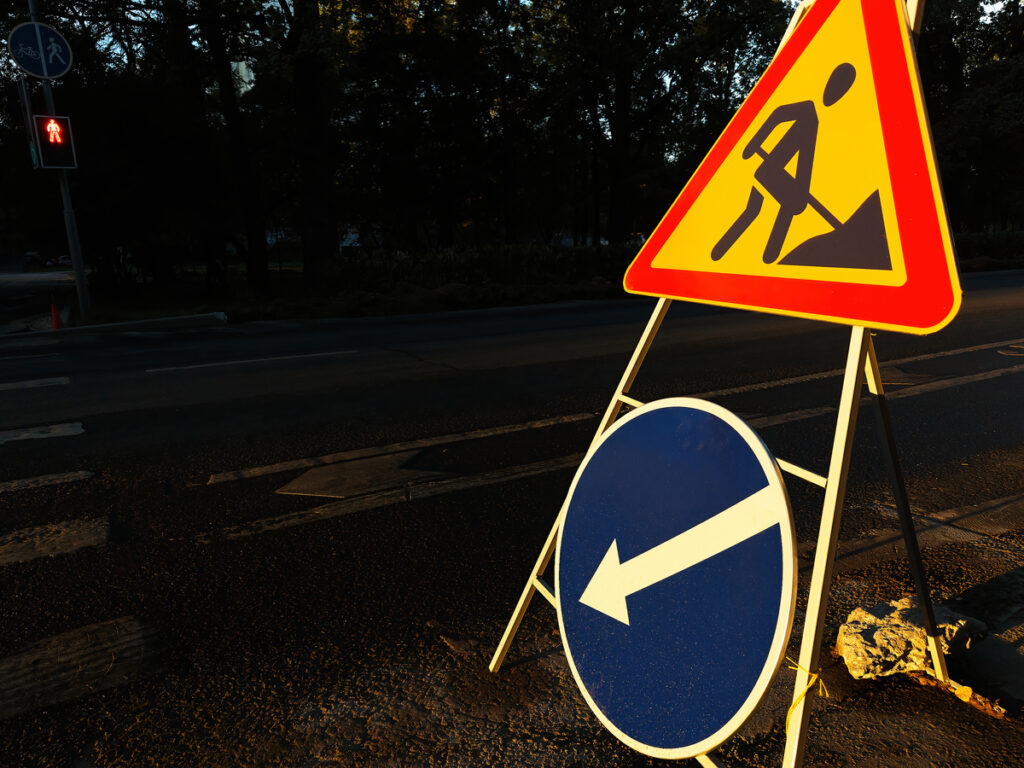
Les travaux de construction de nuit présentent des défis uniques, notamment en ce qui concerne la mauvaise visibilité. Il peut être difficile de voir les panneaux ou les travailleurs lorsqu’il fait sombre, c'est pourquoi il est crucial de sélectionner les bonnes couleurs de panneaux.. Bright colors, comme les panneaux de construction orange fluorescent, améliorer considérablement les conducteurs’ capacité à remarquer les avertissements. Ces couleurs contribuent à une navigation plus sécuritaire dans les zones de travaux.
Des recherches indiquent que les panneaux de construction orange fluorescent améliorent la sécurité pendant les opérations de nuit. Ils sont plus faciles à lire à distance, Surtout pour les conducteurs plus âgés. En plus, ces panneaux contribuent à réduire le risque d'accidents dans les zones de travail. C'est pourquoi les panneaux de chantier orange sont le choix privilégié pour garantir la sécurité des chantiers..
Pour les travaux de nuit, OPTRAFFIC fournit des panneaux de construction de haute qualité qui améliorent considérablement la visibilité. Ces panneaux de construction sont conçus pour être hautement réfléchissants, assurant une visibilité claire même dans des conditions de faible luminosité. Cela les rend particulièrement avantageux pour les conducteurs plus âgés. En utilisant les panneaux de sécurité OPTRAFFIC de qualité supérieure à vendre, OPTRAFFIC contribue à améliorer la fluidité du trafic et à réduire les risques d'accidents, assurer une sécurité accrue des travailleurs et des conducteurs dans les zones de construction.
Principaux à retenir
- L'orange vif est la meilleure couleur pour les panneaux de construction de nuit. Il attire rapidement l'attention et aide les conducteurs à réagir rapidement.
- L’utilisation de couleurs vives comme le jaune-vert facilite la visibilité. Cela permet aux travailleurs et aux personnes marchant en toute sécurité dans les zones de construction.
- Les matériaux réfléchissants sont très importants pour les panneaux nocturnes. Ils renvoient la lumière aux conducteurs, pour que les signes soient visibles dans le noir.
- Placer des panneaux au bon endroit et ajouter des lumières aide les gens à mieux les voir. Les panneaux doivent être au niveau des yeux et bien éclairés pour éviter les accidents.
- Le respect des règles de sécurité et l'utilisation de matériaux solides permettent aux panneaux de fonctionner par tous les temps.. Cela assure la sécurité des travailleurs et des conducteurs à tout moment.
Importance des couleurs haute visibilité
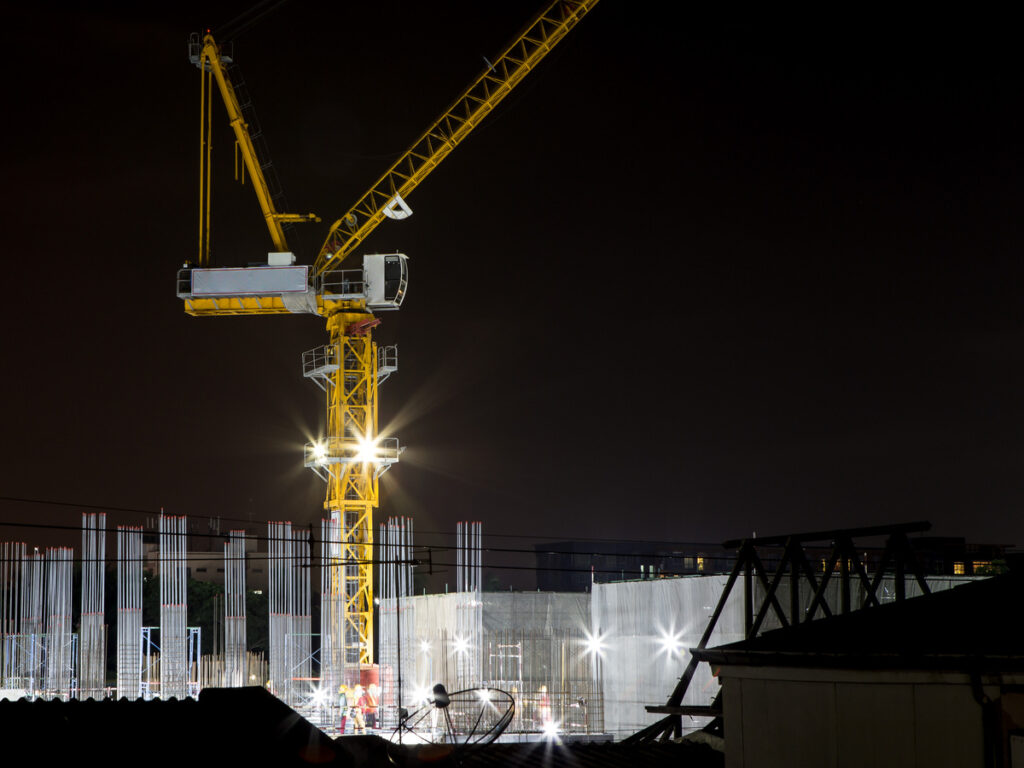
Protéger les travailleurs et les conducteurs
Conduire à travers les zones de construction la nuit peut être délicat. Il est très important de voir rapidement les travailleurs et les panneaux.. Les couleurs vives comme l’orange fluo ou le jaune-vert aident beaucoup. Ils se démarquent des zones sombres, rendre les panneaux et les travailleurs plus faciles à voir.
Dans 2020, sur 800 des gens sont morts, et presque 195,000 ont été blessés dans des emplois dans les transports. De nombreux accidents se sont produits dans des zones peu éclairées. Des vêtements et des panneaux clairs réduisent ces risques en permettant de remarquer plus facilement les personnes et les dangers..
- Un équipement de sécurité lumineux aide les conducteurs à voir les travailleurs dans les zones de travail.
- Des études vérifient comment les couleurs des gilets affectent l'attention dans les zones de travail.
L'utilisation de couleurs vives rend les zones de construction plus sûres pour tous.
Réduire les accidents dans l'obscurité
Les zones de construction nocturnes sont dangereuses car difficiles à voir. Les couleurs sombres comme le noir ou le marron se fondent dans l'arrière-plan. Cela rend plus difficile la détection des panneaux ou des travailleurs. Les couleurs vives comme l'argent et le blanc réduisent les risques d'accident car elles reflètent mieux la lumière..
Les faits clés comprennent:
- Les voitures noires sont deux fois plus susceptibles de causer des blessures graves lors d'accidents que les voitures plus légères, surtout la nuit.
- Les voitures argentées sont 40% moins susceptibles de causer des blessures graves que les voitures blanches car elles réfléchissent plus de lumière.
Ces faits montrent pourquoi, les couleurs réfléchissantes sont si importantes. Ils aident à garder les travailleurs et les panneaux visibles, Même dans le noir.
Aider les conducteurs à repérer les avertissements plus rapidement
La nuit, Chaque seconde compte. Les couleurs vives aident les conducteurs à remarquer plus rapidement les avertissements et les instructions.. Cela leur donne plus de temps pour réagir. La recherche montre que les couleurs fluorescentes attirent mieux l'attention que les couleurs ordinaires.
| Condition | Distance (ft) | Détection fluorescente (%) | Détection standard (%) |
|---|---|---|---|
| Un | 396 | 93 | 43 |
| Un | 90 | 100 | 92 |
| Crépuscule (15 minutes après le coucher du soleil) | 100 | 96 | 85 |
| Crépuscule (15 minutes avant le coucher du soleil) | 30 | 74 | 62 |
Ce tableau montre que les couleurs fluorescentes améliorent la visibilité et les temps de réaction. Ils fonctionnent particulièrement bien dans les zones faiblement éclairées. Le choix de couleurs vives pour les travaux de nuit aide les conducteurs à voir et à réagir plus rapidement aux panneaux..
Principaux défis de visibilité lors de la construction de nuit
Conditions de faible luminosité et de mauvaise visibilité
Travailler la nuit est difficile parce qu'il fait très sombre. Les conducteurs ne peuvent pas voir les panneaux de sécurité, ouvriers, ou bien la route. Cela rend les zones de construction plus dangereuses. Il est plus difficile de remarquer les choses dans le noir qu’à la lumière du jour. C'est pourquoi la sécurité est particulièrement importante pendant les travaux de nuit..
Pensez à ça: seulement 25% de conduire se produit la nuit, mais 50% des accidents mortels se produisent alors. Cela montre à quel point une faible visibilité peut être dangereuse. Brillant, les panneaux réfléchissants et les vêtements aident beaucoup. They reflect car headlights, rendre les choses plus faciles à voir. Les marquages routiers rétroréfléchissants guident également les conducteurs en toute sécurité dans les zones de travaux.
L'ajout de lumières aux zones de construction les rend également plus sûres. Les feux aident les conducteurs à mieux voir les travailleurs et les routes, réduire les risques d'accident. Les gilets réfléchissants et les équipements lumineux sont également très importants. Ces petits changements peuvent sauver des vies.
Risque accru d’accident la nuit
Conduire la nuit est plus difficile car il fait sombre. C'est difficile de juger les distances, repérer les dangers, ou réagir vite. C'est pourquoi les accidents surviennent plus souvent pendant les travaux de nuit. Sans bonne visibilité, les conducteurs peuvent manquer les panneaux ou les travailleurs jusqu'à ce qu'il soit trop tard.
Les couleurs vives et les matériaux réfléchissants aident beaucoup. Ils se démarquent dans l’obscurité et donnent aux conducteurs plus de temps pour réagir. Par exemple, les panneaux réfléchissants blancs et rouges sont plus faciles à voir avec les phares. Des vêtements clairs assurent également la sécurité des travailleurs en les rendant visibles.
Quand vous utilisez un bon éclairage, signes clairs, et un équipement lumineux, les zones de construction deviennent plus sûres. Le travail de nuit ne doit pas nécessairement être dangereux si vous améliorez la visibilité.
Couleurs haute visibilité recommandées pour la signalisation nocturne
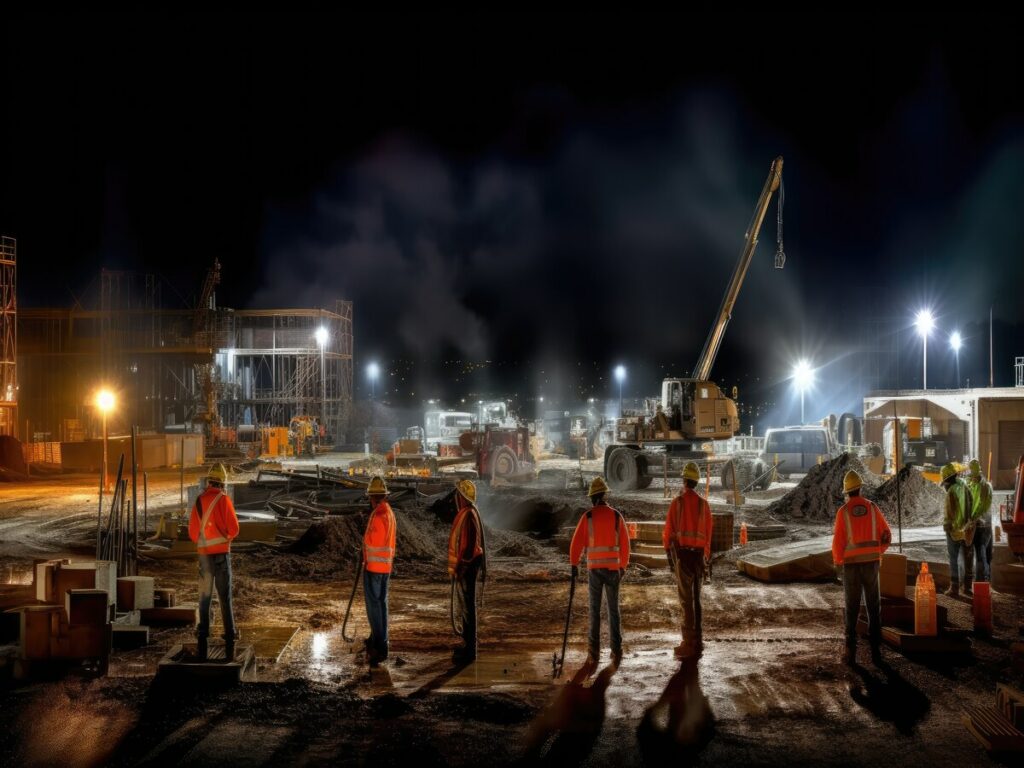
Orange fluorescent: Zones de travail temporaires
L'orange fluorescent est la meilleure couleur pour les zones de travail temporaires. Il attire rapidement l'attention, Même dans une faible lumière. Cette couleur vive se démarque dans les zones de construction sombres. Les conducteurs peuvent voir ces signes de loin. Cela leur donne plus de temps pour réagir et conduire en toute sécurité.
Des études soutiennent cela. Recherche par Chrysler, Carlson, et Hawkins (2002) a montré que les panneaux orange fluorescent sont plus faciles à lire la nuit. Les panneaux fabriqués avec des feuilles de type VIII étaient lisibles depuis 175 pieds. En comparaison, Les feuilles de type III étaient lisibles uniquement à partir 148 pieds. Cela signifie que les conducteurs remarquent plus tôt les panneaux orange fluorescent., réduire les risques d'accident.
| Type de feuille rétroréfléchissante | Distance moyenne de lisibilité (ft) |
|---|---|
| ASTM Type III (orange) | 148 |
| ASTM Type VIII (orange fluorescent) | 175 |
| ASTM Type IX (orange fluorescent) | 169 |
Pour les zones de travail temporaires, les panneaux de construction orange fluorescent sont un excellent choix. Ils améliorent la visibilité et contribuent à assurer la sécurité de tous. Ces panneaux de construction orange peuvent être efficacement associés à cônes de trafic et délimitants créer des limites claires, guider le trafic, et améliorer la sécurité dans les zones très fréquentées ou dangereuses.
À OPTRAFIC, Nous offrons vente en gros cônes de signalisation et Délinoirs de la circulation Conçu pour une visibilité et une durabilité maximales. Cônes de signalisation et délinéateurs OPTRAFFIC de haute qualité, associé à des panneaux de construction orange de sécurité, fournir une solution efficace pour vos besoins en matière de sécurité de zone de travail.
Contactez-nous dès aujourd'hui pour découvrir nos produits de sécurité routière.
Jaune-Vert Fluorescent: Sécurité des piétons et des travailleurs
Le jaune-vert fluorescent est idéal pour la sécurité des piétons et des travailleurs. Il est souvent utilisé pour les passages piétons, zones de sécurité, et zones à risque. Cette couleur vive est facile à voir, Même en basse lumière. Vous l'avez probablement vu sur les gilets de sécurité ou les panneaux de zone scolaire..
Cette couleur fonctionne bien car elle se démarque de la plupart des arrière-plans. Les conducteurs le remarquent rapidement, les aidant à rester conscients des travailleurs ou des piétons à proximité. L'ajout de panneaux fluorescents jaune-vert peut rendre les zones de construction nocturnes beaucoup plus sûres.
Réfléchissant Blanc et Rouge: Panneaux réglementaires et d'interdiction critiques
Le blanc et le rouge réfléchissants sont essentiels pour des panneaux comme “Arrêt” ou “Ne pas entrer.” Ces couleurs sont faciles à reconnaître et fonctionnent bien la nuit. Les matériaux réfléchissants les font briller lorsqu'ils sont frappés par les phares des voitures. Cela aide les conducteurs à les voir de loin.
Des études montrent que des panneaux d'arrêt plus lumineux réduisent les accidents nocturnes de 4.4%. Alors que les collisions arrière augmentent légèrement, le taux total d'accidents chute 1.2%. Cela prouve que les panneaux réfléchissants blancs et rouges sont essentiels pour la sécurité nocturne..
L'utilisation de ces couleurs avec des matériaux réfléchissants crée une signalisation efficace et sûre.. Ils respectent les règles de sécurité et contribuent à prévenir les accidents.
Pourquoi l'orange est utilisé pour les panneaux de construction
Facile à voir à tout moment
Les panneaux de construction orange sont populaires car ils sont faciles à remarquer. L'orange fluorescent est encore meilleur. Il reflète bien la lumière, le rendant visible dans des conditions lumineuses ou sombres. Les conducteurs peuvent repérer ces panneaux de construction orange de jour comme de nuit..
Des recherches montrent que l'orange fluorescent aide les conducteurs âgés à mieux voir dans des conditions de faible luminosité. Ces panneaux de construction orange restent brillants à mesure qu'il fait sombre, donc ils sont toujours visibles. Voici comment l’orange fluorescent se compare à l’orange ordinaire:
| État d'éclairage | Rapport de contraste orange fluorescent | Rapport de contraste orange standard |
|---|---|---|
| Un | Plus haut | Inférieur |
| 15 minutes avant le coucher du soleil | Plus haut | Inférieur |
| 15 minutes après le coucher du soleil | Plus haut | Inférieur |
Le contraste plus élevé rend les panneaux de construction orange plus faciles à voir de loin. Cela donne aux conducteurs plus de temps pour réagir. Que ce soit du jour ou de la nuit, les panneaux de construction orange sont très visibles.
Lié à la sécurité et à la construction
Orange est souvent lié à la construction et à la prudence. Ce n'est pas aléatoire. Au fil du temps, l'orange est devenue la couleur incontournable pour avertir les gens des dangers. Cela attire l’attention mais n’est pas trop distrayant, ce qui le rend idéal pour les panneaux de zone de travail.
Les conducteurs associent naturellement l’orange aux zones de construction. Cela les aide à rester alertes et prudents à proximité des zones de travail.. L'utilisation de panneaux de construction orange profite de cette connexion pour améliorer la sécurité.
Règles d'utilisation des panneaux orange
Orange n’est pas seulement une bonne idée, c’est obligatoire. Des groupes comme le Administration des routes fédérales (Fhwa) dire que l'orange doit être utilisé pour les panneaux de construction orange. Ces règles garantissent que toutes les zones de travail se ressemblent, pour que les conducteurs sachent à quoi s'attendre.
L'orange fluorescent fonctionne bien pour les panneaux de construction orange nocturnes car il reflète la lumière.. Il répond aux Manuel sur les dispositifs de contrôle de la circulation uniformes (Mutcd) normes pour les panneaux de sécurité. Le respect de ces règles améliore la visibilité et maintient vos panneaux légaux.
Comprendre la rétroréflectivité pour la visibilité nocturne
Pourquoi les matériaux rétroréfléchissants sont importants
Avez-vous vu des panneaux briller lorsque les phares les frappent? C'est rétro -flectivité! Ces matériaux renvoient la lumière à sa source. Cela rend les panneaux faciles à voir dans l'obscurité. C'est très utile pour la conduite de nuit.
Les études montrent rétroréflet la signalisation et le marquage routier améliorent la visibilité nocturne. Les conducteurs peuvent remarquer ces panneaux de plus loin. Cela leur donne plus de temps pour réagir. Dans les zones de construction, des réactions rapides peuvent arrêter les accidents.
Conseil: Utiliser rétroréflet matériaux pour la signalisation visant à améliorer la sécurité la nuit.
Rétroréfléchissant les matériaux ne font pas que rendre les signes visibles, ils les rendent visibles. Qu'il s'agisse d'un panneau d'arrêt ou d'un avertissement de fermeture de voie, ces matériaux aident les conducteurs à voir et à comprendre les messages dans des conditions de faible luminosité.
Choisir la bonne réflectivité
Pas tous rétroréflet les matériaux sont les mêmes. Choisir le bon type est essentiel pour des panneaux clairs la nuit. Le MUTCD donne des règles pour cela.
Voici ce qu'il faut savoir:
- Les panneaux fluorescents jaunes et jaune-vert doivent respecter les règles de réflectivité des panneaux jaunes..
- Les panneaux orange fluorescents doivent respecter les règles de réflectivité pour les panneaux orange.
- Les agences doivent utiliser l'une des cinq méthodes approuvées par MUTCD pour vérifier la visibilité des panneaux la nuit..
Choisir la bonne réflectivité n’est pas seulement une question de règles, c’est une question de sécurité. Matériaux de haute qualité, comme une feuille de qualité diamant, fonctionne mieux dans les zones sombres.
Quand tu utilises bien rétroréflet matériels, bon éclairage, et placement intelligent, les panneaux deviennent plus sûrs. Les conducteurs apprécieront les efforts visant à rendre leurs déplacements plus faciles et plus sûrs.
Meilleures pratiques pour combiner les couleurs et la réflectivité
Faire ressortir les couleurs
Utiliser des couleurs qui se démarquent aide les conducteurs à mieux voir les panneaux. Les couleurs vives avec du texte en gras attirent rapidement l'attention. Par exemple, orange fluorescent avec lettres noires facile à lire.
Ce n’est pas seulement une question de couleur : les matériaux réfléchissants comptent aussi. Ces matériaux brillent lorsque les phares les frappent. Des panneaux réfléchissants bien entretenus réduisent les risques d'accident en restant visibles dans l'obscurité. Des études montrent que les panneaux orange fluorescent fonctionnent mieux que les panneaux orange ordinaires la nuit. Cela prouve que le contraste est la clé de la sécurité.
Lors de la création de panneaux, réfléchissez à quoi ils ressembleront à différents endroits. Les designs à contraste élevé conviennent mieux aux zones sombres ou très fréquentées. Ils aident les conducteurs à remarquer les panneaux plus rapidement et à réagir à temps.
Placement et éclairage des panneaux
L’endroit où vous placez les panneaux est tout aussi important que leur conception. Placez-les là où les conducteurs peuvent les voir facilement, comme au niveau des yeux. Un bon placement rend les panneaux visibles sous différents angles, réduire les avertissements manqués.
L'éclairage est crucial pour la sécurité nocturne. Les panneaux éclairés par LED restent lumineux même dans l'obscurité totale. L'ajout de lumières aux zones de travail aide les conducteurs à voir plus clairement les travailleurs et les dangers..
Les panneaux doivent également résister aux intempéries. Utiliser des matériaux solides qui conservent leur réflectivité dans le temps. Cela garantit que les panneaux restent utiles quelles que soient les conditions..
En plaçant intelligemment les panneaux, utiliser un bon éclairage, et choisir des matériaux durables, vous rendez les zones de chantier nocturnes plus sûres pour tous.
Erreurs courantes lors du choix des couleurs des panneaux pour la nuit
Choisir des couleurs non réfléchissantes ou difficiles à voir
Utiliser des panneaux de construction qui ne reflètent pas la lumière est dangereux la nuit. L'obscurité rend difficile la vision, et les panneaux non réfléchissants disparaissent presque. Les conducteurs peuvent manquer des avertissements ou des instructions à cause de cela.
Les panneaux nécessitent des matériaux rétroréfléchissants pour être visibles la nuit. Ces matériaux renvoient les faisceaux des phares des voitures vers les conducteurs. Cela rend les signes plus faciles à repérer dans l'obscurité. Sans ceci, les panneaux de construction se fondent dans les ombres, augmenter les risques d'accident. Saviez-vous que la moitié des décès sur la route surviennent la nuit? Cela montre à quel point la visibilité est importante pour la sécurité.
Pourquoi les matériaux réfléchissants sont importants:
- Les panneaux rétroréfléchissants rendent la conduite de nuit plus sûre en réduisant les accidents.
- Des lignes de bord de route plus larges aident les conducteurs à mieux rester dans leur voie.
- Les marquages rétroréfléchissants sur chaussée mouillée réduisent considérablement les taux d’accidents.
L'utilisation de matériaux réfléchissants et de couleurs vives comme l'orange fluorescent ou le jaune-vert permet aux panneaux de construction de se démarquer dans l'obscurité..
Mauvais contraste ou mauvais placement
Le contraste aide les conducteurs à remarquer rapidement les panneaux la nuit. Si la couleur d’un panneau se confond avec son fond, C'est difficile à voir. Par exemple, un panneau sombre sur une route sombre pourrait être complètement manqué. Des designs très contrastés, comme du texte noir sur orange fluorescent, sont plus faciles à lire.
Le placement compte aussi. Des signes trop élevés, trop bas, ou décentré peut être manqué. Des études montrent que les panneaux mal placés sont moins efficaces. Un mauvais placement peut également provoquer des éblouissements ou des ombres, Rendre les signes plus difficiles à voir.
Une étude de Chrysler et al. (2002) a montré que les matériaux rétroréfléchissants améliorent la lisibilité des panneaux la nuit. Un placement et une conception appropriés aident les conducteurs à lire les panneaux de loin.
Les conducteurs comptent sur la vue pour 90% de leurs informations. Si un panneau n’est pas clair ou visible, il n'atteint pas son objectif. Pour éviter ces problèmes, utiliser brillant, des couleurs réfléchissantes et placez les panneaux là où ils sont faciles à voir.
Choisir des panneaux de signalisation à haute visibilité: Facteurs importants
Suivre les règles de sécurité
La signalisation routière pour le travail de nuit doit respecter les règles de sécurité. Ces règles protègent les travailleurs et les conducteurs. Par exemple, la FHWA dit que les panneaux doivent bien refléter la lumière. Cela aide les conducteurs à les voir dans l'obscurité. Les panneaux qui ne reflètent pas la lumière ne peuvent pas être utilisés la nuit. Ils sont trop difficiles à voir et dangereux.
Le MUTCD a également des règles strictes pour les panneaux de construction. Les panneaux doivent rester propres et faciles à voir. Ils ne doivent pas bloquer les passages ni dérouter les gens. Les agences doivent vérifier souvent les panneaux et remplacer ceux qui ne respectent pas les règles de visibilité..
Les travailleurs doivent également porter des vêtements clairs. ANSI / ISES 107-2010 établit des règles pour cet équipement. Les vêtements sont regroupés en trois classes en fonction des besoins de vitesse et de visibilité. Par exemple, Les équipements de classe III sont destinés aux zones à circulation rapide où les travailleurs doivent être très visibles..
En suivant ces règles, les zones de travail deviennent plus sûres et les accidents sont moins probables.
Panneaux solides et résistants aux intempéries
Les panneaux de zone de construction font face à des conditions météorologiques difficiles comme la pluie, neige, et le soleil. C'est pourquoi ils doivent être forts. Les revêtements résistants aux intempéries aident les panneaux à durer plus longtemps et à rester lisibles. Ces revêtements arrêtent de se décolorer, peeling, et la rouille, Même par mauvais temps.
Par exemple, les panneaux près de l'océan résistent à l'eau salée et à l'air humide. Dans les endroits enneigés, les revêtements empêchent l'eau d'abîmer les panneaux. Cela les rend clairs et utiles par tous les temps.
La lumière du soleil peut aussi décolorer les couleurs, Rendre les signes difficiles à lire. Des revêtements spéciaux protègent les panneaux des rayons UV. Cela garde les couleurs vives et faciles à voir.
Choisissez des panneaux qui peuvent gérer la météo de votre région. Des panneaux solides permettent d'économiser de l'argent et de maintenir les zones de travail sûres et conformes au code.
Choisir les bonnes couleurs pour les panneaux nocturnes est très important. Les couleurs vives comme l'orange fluorescent et le jaune-vert aident les conducteurs à voir les avertissements plus rapidement. Les matériaux réfléchissants font ressortir ces couleurs dans l'obscurité.
L'orange est le meilleur choix pour les panneaux de construction. C’est facile à voir et cela signifie prudence partout. L'utilisation de matériaux solides et le respect des règles de sécurité rendent les panneaux plus sûrs.. Chaque petit détail contribue à assurer la sécurité des travailleurs et des conducteurs la nuit.
FAQ
Pourquoi l'orange fluorescent est-il idéal pour les panneaux de construction?
L'orange fluorescent est facile à voir de jour comme de nuit. Il reflète bien la lumière, aider les conducteurs à le remarquer rapidement. Cette couleur signifie aussi “prudence,” donc les conducteurs ralentissent quand ils le voient.
Pourquoi les panneaux nocturnes ont-ils besoin de matériaux rétroréfléchissants?
Les matériaux rétroréfléchissants renvoient la lumière à sa source, comme des phares. Cela rend les panneaux visibles même dans l'obscurité totale. Sans eux, les signes peuvent se fondre dans l'obscurité, provoquant plus d'accidents.
Puis-je utiliser n'importe quelle couleur pour les panneaux de construction?
Non, tu ne peux pas. Des règles comme MUTCD nécessitent des couleurs spécifiques pour des raisons de sécurité. L'utilisation d'autres couleurs pourrait dérouter les conducteurs et rendre les panneaux dangereux.
Comment puis-je garder les panneaux visibles par mauvais temps?
Cueiller, matériaux résistants aux intempéries avec revêtements de protection. Ceux-ci arrêtent de s'estomper, rouiller, ou pelage. Les matériaux réfléchissants aident également les panneaux à rester clairs sous la pluie ou le brouillard en faisant rebondir la lumière..
Les panneaux fluorescents jaune-vert sont-ils réservés aux zones piétonnes ??
Non, Ils ne sont pas. Bien que courant dans les zones piétonnes, ils sont également bons pour la sécurité des travailleurs ou les dangers. Leur couleur vive attire l'attention, les rendre utiles dans de nombreuses situations.
